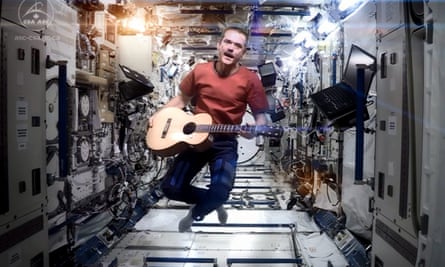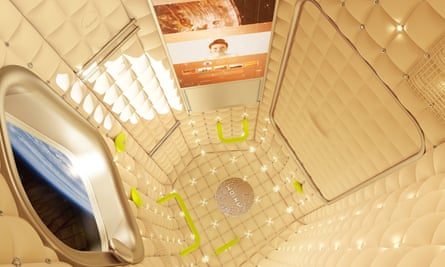The International Space Station is about to pass a remarkable milestone. In November, the giant spacecraft will have been in orbit around our planet for a quarter of a century.
For the past 25 years, hundreds of astronauts have made temporary homes there while other visitors have included frogs, worms, shellfish and butterflies: each has been the subject of experiments aimed at uncovering the effects of weightlessness, radiation and other extraterrestrial phenomena on living creatures. In addition, astronauts have carried out studies of dark matter, cosmic rays and Earth’s ozone layers.
Yet the days of this 100-metre-long behemoth – which began on 20 November 1998 when its first segment, Russia’s Zarya module, was blasted into orbit – are now numbered. The station has already been operating for a decade longer than planned, and it is suffering more and more from air leaks, thruster failures and other mishaps that are intensified as it is heated and cooled 16 times a day while sweeping round the Earth at 17,500mph. Vibrations from spaceship dockings and crew movements are only adding to these woes, as well as its ageing – near obsolete – equipment.
As a result, Nasa has decreed that the ISS, which now consists of 16 pressurised modules, will be terminated and sent spiralling into the Pacific Ocean in 2031. The space agency insists the risks posed to humans by the 400-tonne craft striking our planet will be minimal. “Once the debris enters the ocean, it would be expected to settle to the ocean floor,” it says. “No substantial long-term impacts would be expected.”

The forthcoming destruction of the International Space Station raises key questions. Was it worth £120bn to build and operate? What have we have learned over the past 25 years that justifies this incredible outlay? What will replace it, and who will pick up the bill?
The first question is the most controversial. Many scientists point out that the ISS has provided invaluable insights on how to live and work in zero gravity, knowledge that will be crucial as humanity prepares to return to the moon and head off on long-duration trips to Mars and beyond. Thanks to the space station, we have learned that humans can make homes in outer space and that is a crucial lesson, they state.
Others disagree. They argue that the money spent on the ISS would have been better invested in different projects. In the 1990s, when planning of the ISS began, the US – the principal funder of the international station – was considering two major rival scientific projects. The first was the ISS. The second was a proposed particle accelerator, the Superconducting Super Collider. Both came with colossal pricetags, and the US Congress decided the nation could only afford to provide cash for one. Mainly for political reasons, it chose the ISS and axed funding for the super collider.
The decision left Europe free to build its own particle accelerator, the Large Hadron Collider (LHC), at Cern, in Geneva, where research has since garnered a host of Nobel prizes. By contrast, the US ended up with an “orbital turkey”, as the late US Nobel laureate physicist Steven Weinberg described the ISS. “The only real technology that the space station has produced concerns the technology of keeping humans alive in space – which is a senseless and circular process if you realise there is no point in having humans in space,” he argued.
This point is backed by the UK Astronomer Royal, Martin Rees. “The case for sending humans into space gets weaker and weaker every year as robots get cleverer and more sophisticated,” he told the Observer. “They can do the science and assemble large structures in space and are much, much cheaper to operate in space. We don’t need humans to do research in space.”
“Just look at the headlines,” Rees added. “The only time the ISS makes news is when its toilets stop working or an astronaut floats about with a guitar singing Space Oddity.”
Space stations are not about to disappear from the night sky, however. The ISS may be destined for termination in a few years, but the US, Europe, Japan, Canada and India have all revealed plans to launch and build new orbiting laboratories, while China has already constructed its own permanently crewed station, Tiangong. Now scheduled to outlive the ISS, Tiangong is set to be fitted with extra modules to double its current size in the near future.

For its part, the US – in partnership with Europe, Japan and Canada – is planning to build Gateway, a smaller version of the ISS which would then be put into orbit round the moon. The station would be visited by groups of astronauts, initially for weeks and then for months at a time. From there, they will direct robot craft that will explore the moon’s surface and help prepare for the construction of a permanent crewed base there.
However, it is the arrival of private entrepreneurs that is expected to transform the market, with one key player, the US-based company Axiom, making headlines last week from the announcement that it had reached agreement with the UK Space Agency to send four British astronauts on a two-week space station mission in the near future.
Axiom is scheduled to add four new segments – or habitats, as it calls them – to the ISS, with first launch scheduled for 2026, Michael Baine, the company’s chief engineer, told the Observer. “Each habitat will support four astronauts, who will be sponsored either by an individual nation or a private company, and they will do research and meaningful work in orbit.” This will not be a tourist venture, in other words.
Baine said its four modules would be launched on privately owned rockets, such as SpaceX’s Falcon Heavy launcher. Once put together at the station, the modules would later be detached as a single new space station prior to the ISS being de-orbited and sent to crash into the Pacific. The station would arise from the ashes of the old, in short.
“Each module is designed to last for 15 years or more, possibly 30 years, and we aim to increase capacity there considerably over the years,” added Baine.
“There are many biological and pharmacological products that can be made in space, as well as crystals, fibre optics and metallurgy. All have a strong potential revenue, and we are aiming to exploit that.”
Other private operations being backed by Nasa include US companies such as Orbital Reef and Starlab, with the former describing its planned space station as “a business park in space”.
“We see future space stations as being a combination of zero-gravity factories and research laboratories. That is the potential they offer,” added Baine.
"Stop" - Google News
October 29, 2023 at 10:00PM
https://ift.tt/Uto9F7y
‘It only makes the news when the toilets stop working’: has the 25-year-old International Space Station been a waste of space? - The Guardian
"Stop" - Google News
https://ift.tt/2mkNWcZ
https://ift.tt/n0Frs7h
Bagikan Berita Ini














0 Response to "‘It only makes the news when the toilets stop working’: has the 25-year-old International Space Station been a waste of space? - The Guardian"
Post a Comment